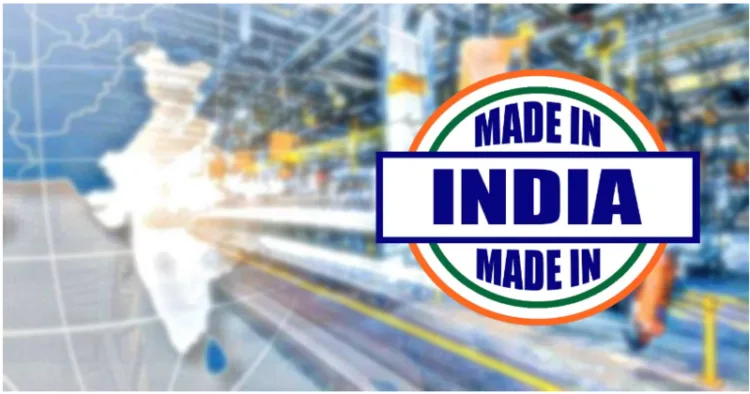The Union government is considering a new initiative aimed at establishing a distinct global identity for Indian products through a ‘Made in India’ label, a senior official revealed. The proposal is currently under review by a high-level committee responsible for developing the framework of the scheme. The primary goal of the initiative is to cultivate a strong brand image for India, akin to the global perceptions surrounding labels like ‘Made in Japan’ or ‘Made in Switzerland,’ which are associated with specific qualities such as precision, reliability, and craftsmanship.
“We want that kind of recognition for India too,” the official stated, drawing comparisons to how Switzerland is renowned for its watches, chocolates, and banking systems. The official added that the discussions include considerations of whether the scheme should focus on specific sectors, such as textiles, where India already has a strong presence.
Experts have noted that quality control and high standards are crucial for promoting Brand India on the global stage. The government currently operates the India Brand Equity Foundation (IBEF), a trust under the Department of Commerce, which promotes the ‘Made in India’ label internationally and enhances awareness about Indian products and services. However, this new proposal aims to take India’s branding efforts to the next level.
The proposed ‘Made in India’ label is being positioned as a key driver for boosting exports by establishing a strong, reliable identity for Indian products in international markets. Government officials are confident that establishing a distinct brand for Indian products could greatly boost global trust and demand, similar to how ‘Made in Japan’ represents technology and precision, and ‘Made in Switzerland’ is linked to high-quality craftsmanship.
According to experts, the label will highlight India’s strengths in sectors such as textiles, pharmaceuticals, and IT, making products from these industries more appealing to foreign buyers. By promoting India’s manufacturing capabilities, the label aims to reassure international consumers about the quality and durability of Indian products.
“An established ‘Made in India’ identity will create confidence among global consumers, encouraging them to prefer Indian products, which in turn will boost exports,” said an official involved in the discussions. The move is expected to open doors to new markets and make Indian exports more competitive on the global stage.
The initiative is seen as complementing existing efforts by the India Brand Equity Foundation (IBEF), which already promotes Indian goods abroad. By adding a unified label to the country’s exports, India hopes to further increase visibility and trust, positioning itself as a top exporter across various sectors.
According to officials and industry experts, sectors that already have a strong presence in international markets stand to gain the most. These sectors could be textiles, IT, pharmaceuticals, handicrafts, automobiles and others. India’s textile industry, renowned for its skilled craftsmanship and deep-rooted heritage, is a leading contender for this initiative. The ‘Made in India’ label would help differentiate Indian textiles from competitors, reinforcing India’s reputation for high-quality fabrics, designs, and traditional techniques.
As a global frontrunner in generic drug manufacturing, India’s pharmaceutical industry stands to gain significantly from adopting a ‘Made in India’ identity. It would reinforce the image of India as a reliable supplier of affordable, high-quality medicines, increasing trust in Indian pharma exports.
India’s IT services and software development industry, which is renowned worldwide, would also see advantages. A strong ‘Made in India’ label would emphasize India’s expertise in tech solutions, encouraging more global businesses to invest in Indian services and products.
As India becomes a manufacturing hub for global auto brands, the label could further enhance its image as a center for cost-effective, reliable vehicles and components. With rising demand for electric vehicles (EVs), this could be particularly impactful.
The ‘Made in India’ label could significantly boost exports in India’s traditional arts, jewelry, and handicrafts sectors by emphasising the uniqueness and artisanal quality of these products.
By focusing on these sectors, the label is expected to strengthen India’s position as a global export powerhouse and attract higher demand from overseas markets.



















Comments